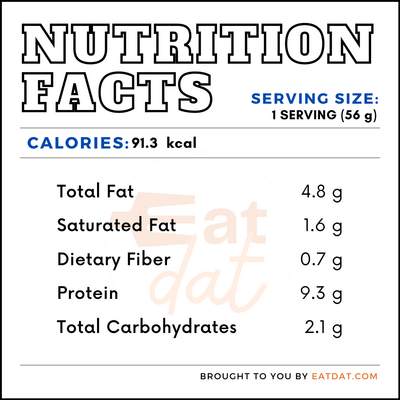
Grilled Ham and Cheese
What is Grilled Ham and Cheese?
The grilled ham and cheese sandwich is a classic sandwich, which is simple to prepare. It is made by putting cheese and sliced ham between two slices of bread. Tomatoes, pickles, lettuce, and onions can also be included in the sandwich. This sandwich can be served toasted, grilled, or plain.
- Grilled ham and cheese sandwiches are a common item in packed lunches in North American and European countries.
- Other versions of the grilled ham and cheese sandwich are the French croque monsieur, the Brazilian misto quente, the Argentinian pebete, and the Cuban sandwich.
The most popular sandwiches around the world are:
- The Philly Cheesesteak (USA)
- Doner Kebab (Turkey & Germany)
- Vada Pav (India)
- Gatsby (South Africa)
- Croque Madame (France)
- Chip Butty (UK)
- Banh Mi (Vietnam)
Origin of grilled ham and cheese
The origin of this sandwich is widely disputed. It may have developed from the French croque-monsieur, which was created in a café in Paris in 1910. However, according to an interview with ballpark concessionaire Harry Stevens in 1924, ham and cheese sandwiches were sold during baseball games in New York as far back as 1894. Richard E. Byrd took ham and cheese sandwiches on his polar expedition in 1926. On the other hand, The Larousse Gastronomique of 1961 states an Irish immigrant in England called Patrick Connolly, created a similar sandwich and named it the “Connolly”.
Nutrition
Ham is full of protein and essential amino acids. It also has key vitamins such as vitamin C, choline, niacin, and betaine. One serving (56 g) contains:

It is a rich source of iron and can even prevent anemia. However, ham also has a high level of saturated fats and sodium, which can lead to cardiovascular problems, high blood pressure, and strokes.
The main ingredient in this sandwich, white bread, provides simple carbohydrates. If using whole grain bread, it also contains fiber, proteins, fats, and several micronutrients. Also, cheese is a good source of fats and lipids, proteins and peptides, carbohydrates and prebiotics, probiotic bacteria, vitamins, and mineral salts. Regular consumption of cheese may reduce the risk of osteoporosis, diabetes, cardiovascular diseases, strokes, hypertension, and certain types of cancers.
Commercial Production
A grilled ham and cheese sandwich is a simple recipe that is served in many restaurants. It is prepared by placing slices of cheese and ham between two slices of bread, which are then grilled. Different restaurants vary the recipe by adding different toppings to the sandwich such as pickles, lettuce, onions, and other ingredients. The recipe may be made using different types of breads, ham, and cheeses as well. In addition, there is scope for further variety by serving it with different side dishes such as French fries, soups, or salads.
Grilled ham and cheese recipes
These sandwiches lend themselves to slight variations. Here are a few recipes:
- Grilled Ham and Cheese Sandwich
- Croque Monsieur
- Apple, Ham and Cheese Sandwich
- Cuban Sandwich
- Argentinian Crumb Sandwich
- Country Ham Sandwich
FDA regulations
The USDA regulates all meat products, including ham. The meat may be fresh, cured, or cured and smoked. The pork must not be derived from boars, and sows must be harvested in facilities that comply with USDA and FDA regulations. All pork products are graded based on quality and cleanliness.
The FDA regulates all breads under the umbrella term of bakery products. Bread is defined as food produced by baking mixed yeast-leavened dough prepared with wheat. In order to be classified as bread, the product must have at least 62 percent solids. Cheeses are also governed under the FDA. The most common cheeses used in a ham and cheese sandwich are Swiss cheese, cheddar, gruyere, parmesan, and gouda, all of which have separate specific requirements.
References
Agarwal, Sanjiv et al. “Association of lunch meat consumption with nutrient intake, diet quality and health risk factors in U.S. children and adults: NHANES 2007-2010.” Nutrition journal vol. 14 128. 30 Dec. 2015, doi:10.1186/s12937-015-0118-9
https://www.ncbi.nlm.nih.gov/pmc/articles/PMC4696330/
Márquez Contreras, Emilio et al. “Effect of moderate and regular consumption of Cinco Jotas acorn-fed 100% Iberian ham on overall cardiovascular risk: A cohort study.” Food science & nutrition vol. 6,8 2553-2559. 25 Oct. 2018, doi:10.1002/fsn3.869
https://www.ncbi.nlm.nih.gov/pmc/articles/PMC6261208/
McRae, Marc P. “Health Benefits of Dietary Whole Grains: An Umbrella Review of Meta-analyses.” Journal of chiropractic medicine vol. 16,1 (2017): 10-18. doi:10.1016/j.jcm.2016.08.008
https://www.ncbi.nlm.nih.gov/pmc/articles/PMC5310957/
Thorning, Tanja Kongerslev et al. “Milk and dairy products: good or bad for human health? An assessment of the totality of scientific evidence.” Food & nutrition research vol. 60 32527. 22 Nov. 2016, doi:10.3402/fnr.v60.32527
https://www.ncbi.nlm.nih.gov/pmc/articles/PMC5122229/
